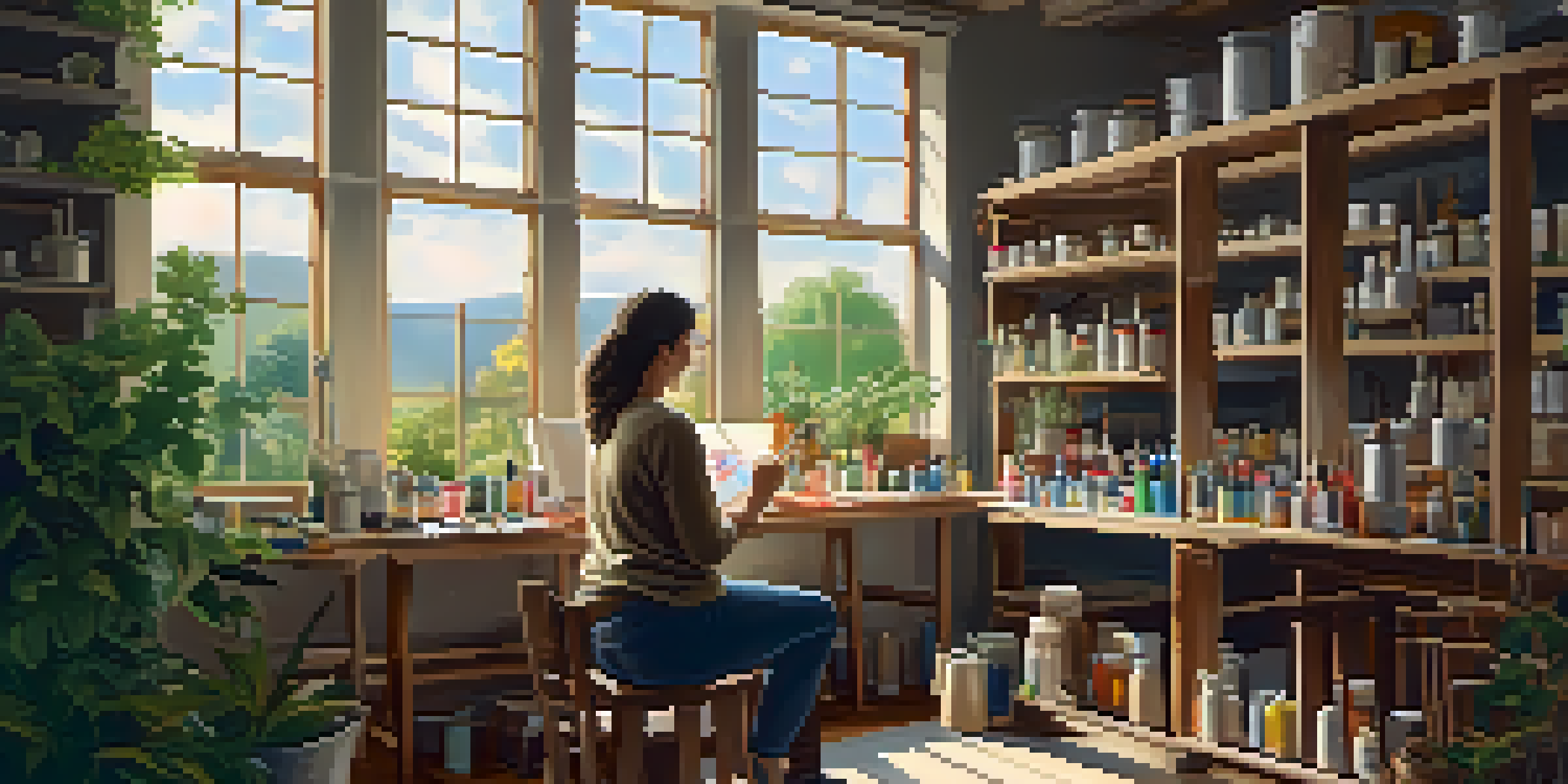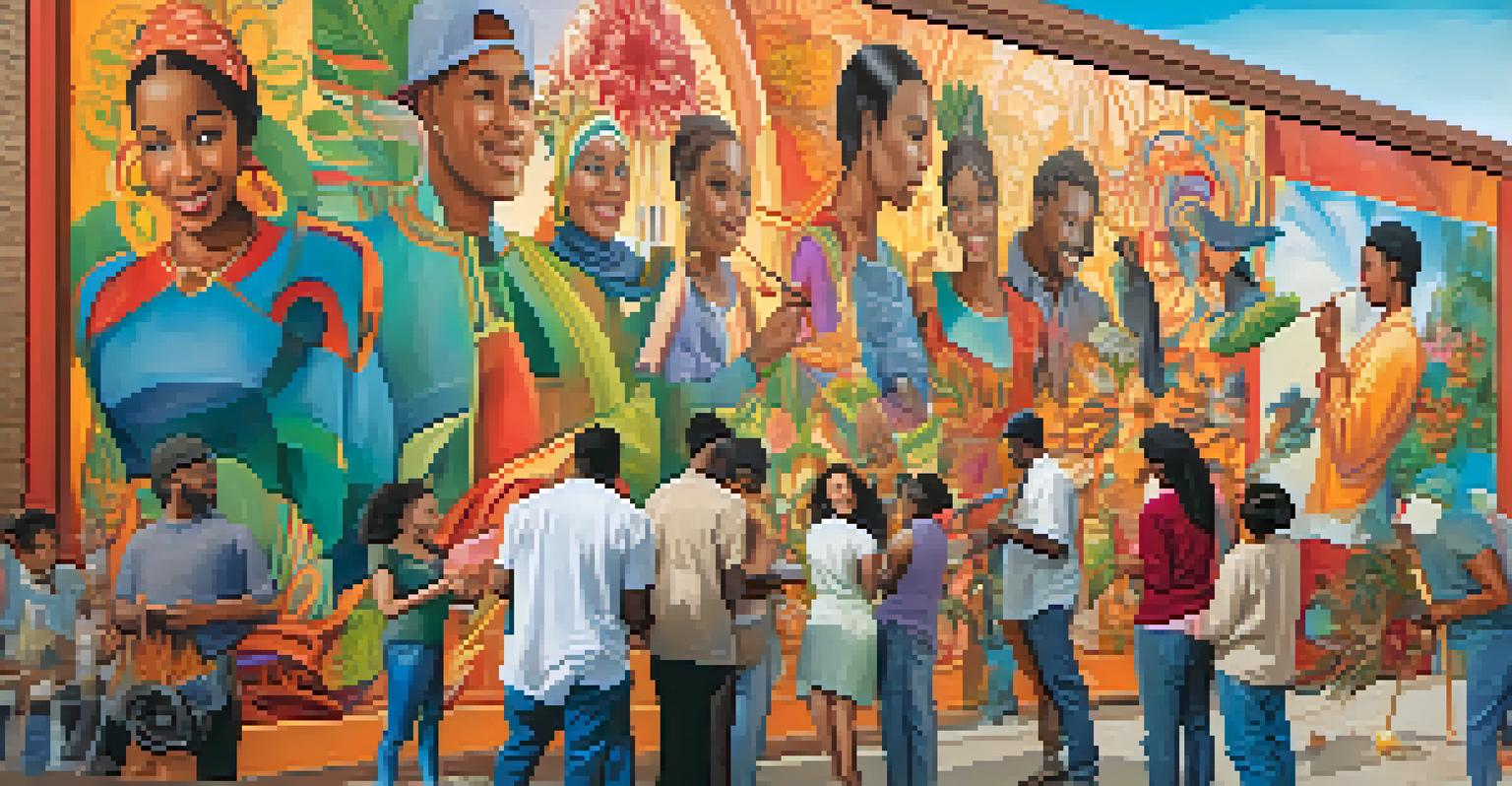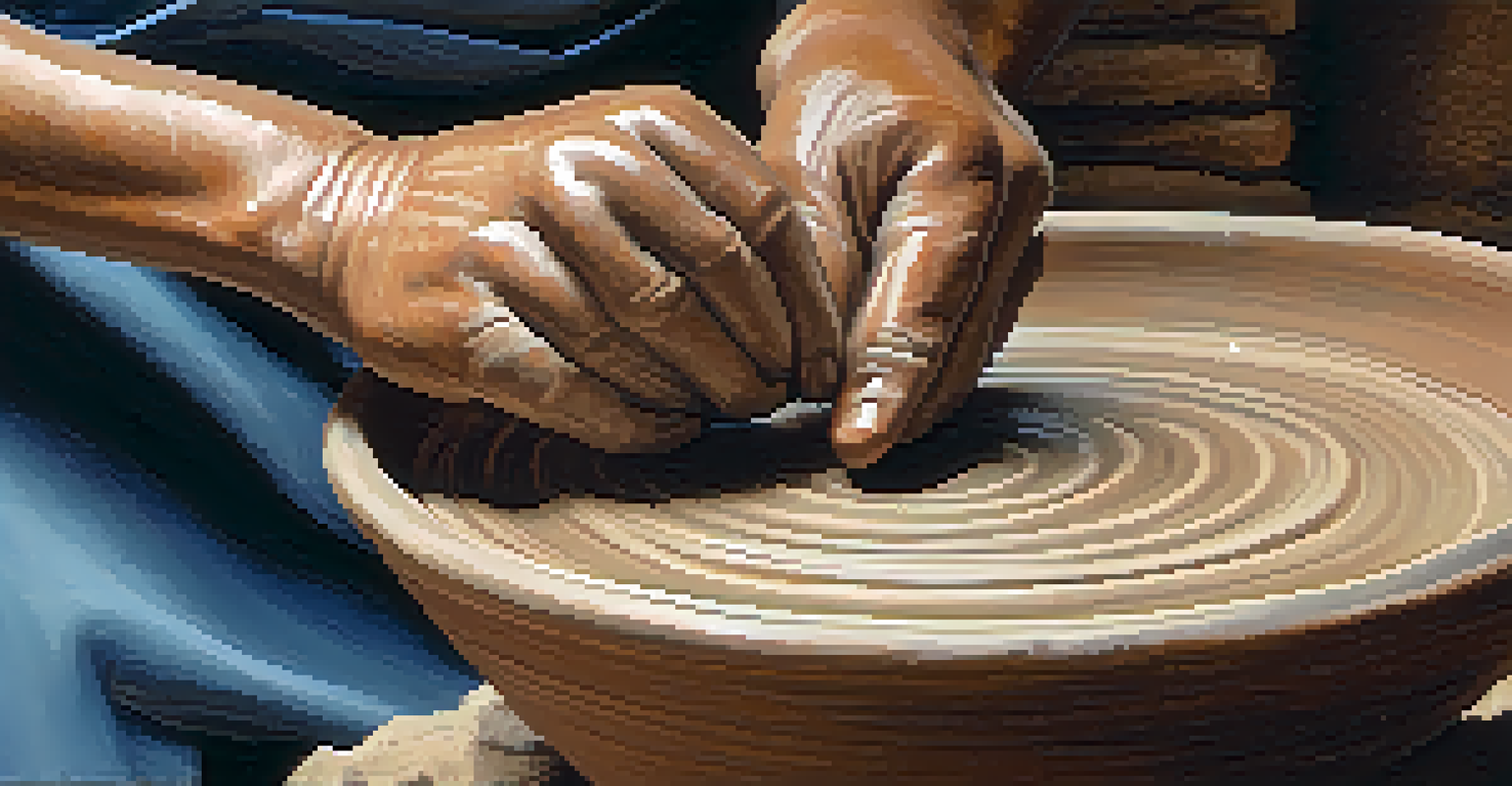Artistic Journeys: How Creating Leads to Personal Transformation

The Healing Power of Artistic Expression
Art has a unique way of expressing emotions that words often can't capture. Whether it's painting, music, or dance, engaging in artistic activities allows individuals to channel their feelings into something tangible. This process often leads to emotional release and healing, making art a powerful tool for personal transformation.
Every artist was first an amateur.
Take, for example, someone who has experienced loss. By creating a piece of art, they can express their grief in a way that feels safe and cathartic. This not only aids in processing their emotions but also serves as a tribute to what they’ve lost, helping them to find closure.
Moreover, the act of creating can foster mindfulness, pulling individuals into the present moment. This focus can reduce anxiety and promote mental well-being, highlighting the therapeutic benefits of artistic endeavors.
Discovering Identity Through Creative Outlets
Artistic journeys often serve as a mirror, reflecting our true selves back to us. When we engage in creative activities, we explore and express our identities, values, and beliefs, which can be especially empowering. This self-discovery aspect can lead to greater self-acceptance and confidence.

For instance, a young person experimenting with different art forms might find a hidden talent that boosts their self-esteem. This newfound confidence can spill over into other areas of their life, encouraging them to pursue their passions more boldly.
Art Heals Emotional Wounds
Engaging in artistic activities provides a safe outlet for expressing and processing complex emotions, leading to personal healing.
Ultimately, the creative process allows for exploration without fear of judgment, providing a safe space for individuals to uncover and embrace their authentic selves.
Building Community Through Collaborative Art
Art isn't just a solitary pursuit; it often brings people together. Collaborative projects—like murals, theater productions, or community art workshops—encourage individuals to work alongside one another, fostering a sense of belonging and connection. This shared experience can be transformative, creating bonds that last beyond the project itself.
Art is not freedom from discipline, but disciplined freedom.
Consider a community mural where diverse artists come together to express their stories. The resulting artwork not only beautifies the neighborhood but also tells a collective story, weaving together the experiences of its creators.
Through collaboration, individuals can learn from one another, challenge preconceived notions, and celebrate diverse perspectives, ultimately enriching their own artistic journeys.
Challenges as Catalysts for Growth in Art
Every artist faces challenges, whether it's creative blocks, criticism, or technical difficulties. Instead of deterring individuals, these obstacles can act as powerful catalysts for growth. Embracing challenges encourages resilience and adaptability, key components of personal transformation.
For example, an artist who struggles with self-doubt might find that pushing through their fears leads to breakthroughs in their work. This journey not only improves their craft but also strengthens their character, teaching them valuable lessons about perseverance.
Creative Expression Builds Identity
Through artistic exploration, individuals can discover and embrace their true selves, boosting self-acceptance and confidence.
In this way, the artistic journey becomes a metaphor for life itself, showing that obstacles can lead to profound personal evolution.
Art as a Medium for Social Change
Art has long been a powerful vehicle for social commentary and change. Artists can highlight injustices, provoke thought, and inspire action through their work. This not only influences society but also fosters a sense of purpose and fulfillment in the artist, contributing to their personal transformation.
Consider street artists who use their talents to address social issues. Their work can spark conversations and mobilize communities, illustrating the profound impact art can have on society.
By participating in this dialogue, artists often find their own voices and passions, leading to a deeper understanding of their role in the world and enhancing their personal journeys.
Cultivating Mindfulness and Presence Through Art
Engaging in artistic activities can cultivate mindfulness, drawing individuals into the present moment. This focus on the 'now' can be incredibly transformative, helping to alleviate stress and promote emotional balance. When we create, we often lose track of time, fully absorbed in the process.
For instance, a potter shaping clay experiences a meditative state, where the act of creation becomes a form of self-care. This practice not only nurtures creativity but also encourages a sense of peace and well-being.
Art Fosters Community Connections
Collaborative art projects create a sense of belonging and shared experience, enriching relationships and perspectives among participants.
In this way, art becomes more than just a hobby; it transforms into a practice that enriches mental health and fosters personal growth.
The Lifelong Journey of Artistic Exploration
The beauty of art lies in its endless possibilities for exploration and growth. Every new medium, technique, or style offers opportunities for individuals to expand their horizons and deepen their understanding of themselves. This lifelong journey can lead to continual transformation as artists evolve alongside their work.
Consider an individual who starts with watercolor painting and eventually explores photography, sculpture, or digital art. Each new venture enriches their skills and broadens their perspective, revealing new aspects of their creativity.

As they navigate this journey, they'll likely discover new passions and insights, demonstrating that artistic exploration is a dynamic and ever-evolving process of personal transformation.
Conclusion: Embracing the Transformative Nature of Art
In conclusion, the journey of creating art is deeply intertwined with personal transformation. From healing emotional wounds to discovering one's identity and fostering community, art offers a myriad of pathways for growth. By embracing the creative process, individuals open themselves up to profound change and self-discovery.
The stories of artists who navigate challenges, seek mindfulness, and engage with social issues illustrate the transformative power of creativity. These journeys remind us that art is not just a product; it is a process that shapes who we are.
So, whether you're a seasoned artist or someone considering picking up a paintbrush for the first time, remember that your artistic journey is a valuable opportunity for personal transformation waiting to unfold.